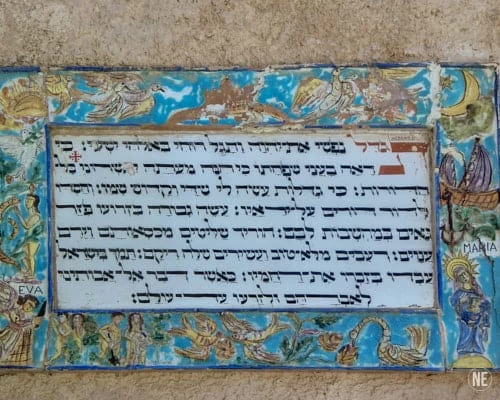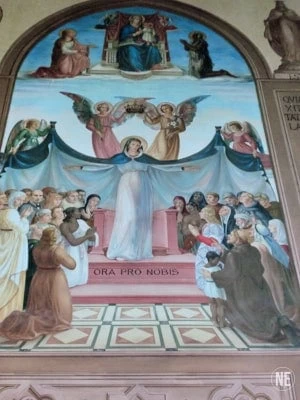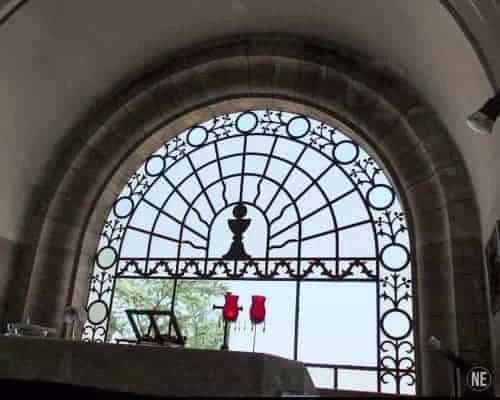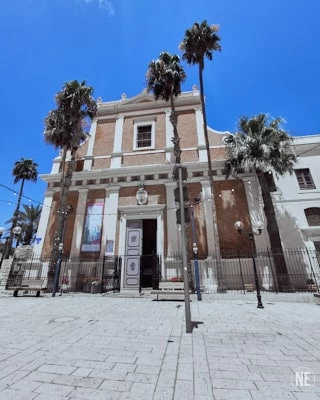The Church of the Visitation holds profound significance as the site where Mary visited her cousin Elisabeth, known as Elisheba in Hebrew.
As depicted in the Gospel of Luke (Luke 1:39-45), Mary embarked on a journey to the town in the mountainous region of Judea to greet Elisabeth. Upon hearing Mary’s greeting, Elisabeth was filled with the Holy Spirit, and her unborn child, John the Baptist, leaped in her womb with joy.
This sacred place traces its origins back to a Byzantine church dating to the 4th century. It later served as a Crusader church in the early 12th century. Eventually, the Franciscan order acquired the site in 1679, and the Ottomans approved renovations in the 19th century.
The present-day church, completed in 1955, was envisioned by the renowned Italian Franciscan architect Antonio Barluzzi, who crafted numerous iconic churches across Israel. The church’s stunning wall paintings were created by the collaboration of Italian artists and the Jewish-Israeli painter Mordechai Ardon.
Bronze statues of Zacharias and Elisabeth grace the church’s entrance, while a sculpture depicting the meeting of Mary and Elisabeth adorns the courtyard. Legend has it that touching the statues’ pregnant bellies aids in fertility.
The Magnificat prayer, uttered by Mary upon her visitation, is commemorated within the church. This prayer, found in Luke 1:45-56, extols the greatness of God and celebrates His mercy and faithfulness throughout generations.
As a testament to Mary’s prayer’s universal significance, 47 ceramic tablets bearing the Magnificat are displayed on the courtyard wall, each inscribed in a different language, symbolizing the prayer’s profound impact across cultures and languages.
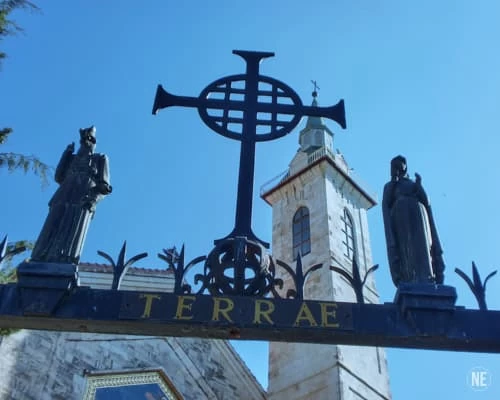
The Magnificant prayer
The Magnificat, also known as the Canticle of Mary, is a hymn of praise and thanksgiving uttered by the Virgin Mary upon her visitation to her cousin Elisabeth. It is found in the Gospel of Luke (Luke 1:46-55) This prayer reflects Mary’s humility, gratitude, and faith in God’s promises, celebrating His mercy and justice throughout history. Here is the text of the Magnificat prayer:
“My soul magnifies the Lord, And my spirit rejoices in God my Savior, For He has regarded the lowly state of His maidservant; For behold, henceforth all generations will call me blessed. For He who is mighty has done great things for me, And holy is His name. And His mercy is on those who fear Him From generation to generation. He has shown strength with His arm; He has scattered the pride in the imagination of their hearts. He has put down the mighty from their thrones And exalted the lowly. He has filled the hungry with good things, And the rich He has sent away empty. He has helped His servant Israel, In remembrance of His mercy, As He spoke to our fathers, To Abraham and to his seed forever.”
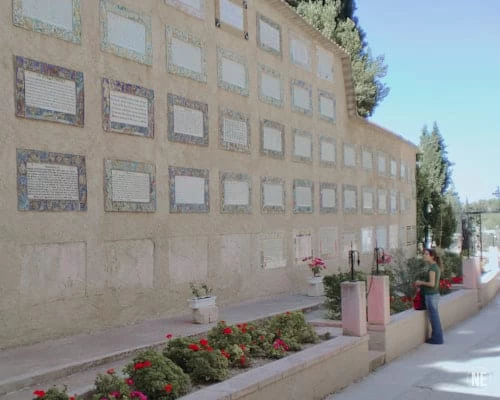
The Church Crypt
The Church of the Visitation is constructed around the crypt, believed in Christian tradition to be the cave where Elisheva and her son John were concealed from Herod’s soldiers. The church’s floor features a mosaic resembling a carpet, while the ceiling is adorned with vine paintings, creating an ambiance reminiscent of a “sukkah,” or temporary dwelling. This architectural design immerses visitors in the historical and cultural context of the biblical narrative, enhancing the spiritual experience of the site.
The Upper Basilica
The church houses an upper basilica devoted to Mary, adorned with paintings depicting various events from her life. One notable scene portrays the proclamation of Mary as the mother of God in Ephesus during the 14th century. Another painting depicts the first miracle in Cana, where water was turned into wine. In the central apse, Mary is depicted receiving the realm of heaven. The windows feature depictions of women from both the Bible and the New Testament, including Sarah, Rachel, Jael, and Judith. These artworks offer a visual journey through the significant moments and figures associated with Mary’s story.

Basic Information
Name of the church Church of the Visitation at Ein Karem.
Address, EIN Karem Village
Map
Christian Franciscan Catholic Order.
Construction year is 1955.
Arrival options
| Bus lines | Bus number 28 from Jerusalem bus station or Mount Herzel. |
| Car | To find free parking near the church in Ein Karem, simply enter “Ein-Karem parking” into your Waze app. This will direct you to the designated parking area, which is conveniently located just a 10-minute walk from the church. |
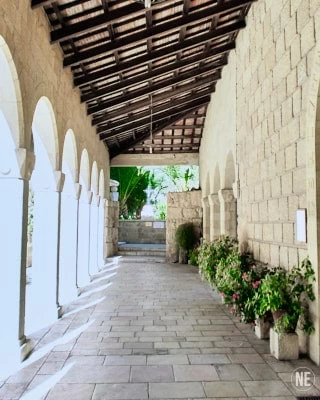
Accessibility
While the first floor of the church is accessible, the higher basilica is not. If necessary, you can drive your car to the top of the hill where the church is located. However, please note that parking space is limited and subject to availability. It may be more suitable to only use this option for drop-offs and pickups.
Opening Hours
Daily 08:00-18:00. The upper church is closed from 11:45am to 2:30pm.
Entrance is free of charge.
Phone number +972-(0)2-6147291
Toilet is available.
Nearby site activities
Don’t forget to visit Saint John’s Church, which is not far away. As you explore the charming alleyways of the village of Ein Karem, be sure to indulge in some delicious local ice cream and chocolate from the nearby shops!

Site explaining My experience
The church sits atop the Ein Karem mountain, offering breathtaking views of the surrounding area. As you ascend the mountain on foot, you’ll feel a sense of anticipation building. Downstairs, you’ll find the remnants of an ancient cistern where, according to tradition, John the Baptist sought refuge from Herod. On the second floor, you’ll discover the remains of a Crusader church. Adjacent to the church is a convent of the Rosary Sisters, along with an orphanage. Don’t miss the opportunity to visit nearby Mary’s Well, where Mary and Elizabeth are said to have met before making their way to Elizabeth’s house.
